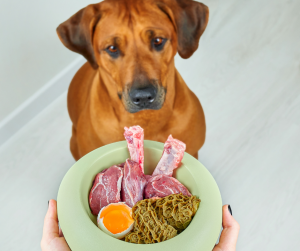
This is not the standard debate… Depending on which side of the tracks you come from, some raw pet food manufacturers feel like HPP (High Pressure Processing) is appropriate; some do not.
That is NOT the purpose of this post. We need to talk about HPP from a legal perspective.
While HPP, high-pressure processing, some people call it high-pressure pasteurization, has been used in human food for decades, the FDA has been reluctant to allow for its use in raw pet food.
I have personally spent the last two years working with state regulators at AAFCO to settle on a definition of HPP. After all, how can regulators regulate a process if the process isn’t defined? And while we had a great presentation at an AAFCO meeting from a world renowned expert in the industry, Mary Grace Danao, the FDA still is reluctant to define — let alone approve — the use of HPP for raw pet food.
Currently, any manufacturer who wants to use HPP needs to run what’s called a validation study. It’s a study where the manufacturer adds a measured amount of bacteria to their food and demonstrates that with the HPP process, there is dramatic reduction of pathogen in the product. The industry standard has been called five log reduction. The FDA does not accept this for individual raw pet food manufacturers. We have recently been informed by a manufacturer who found a 7.5 log reduction that it still wasn’t acceptable for the FDA and the FDA still questioned the procedures.
Perhaps the real reason that the FDA will not weigh in on a definition of HPP is they simply don’t want this process to be approved for raw pet food.
FDA walks a hard line against raw pet food. They want to see a kill step. Inspectors who go into facilities year after year after year, on audio and video recording, state to different manufacturers that the only thing that’s going to be accepted is either HPP, itradiation, or cooking. Raw pet food is simply not acceptable to the FDA. The FDA is absolutely unable or unwilling to distinguish between purveyors of roadkill and pet food manufacturers who use USDA sourced and passed, or equivalent, ingredients.
Anybody manufacturing raw pet food knows this.
Certain manufacturers have felt heavy duty pressure toward using HPP as an acceptable step to pathogen control. But how can it be an acceptable step when the FDA will not accept a validation study?
The regulatory agency is talking out of both sides of its mouth. On the one hand, we have inspectors in the field telling manufacturers that they have to do HPP. On the other hand, those further up the FDA food chain refuse to accept a validation study.
So this is the problem with HPP. If you choose to do HPP on your raw pet food, the FDA doesn’t want to accept your procedures. And the procedures that have been acceptable for those manufacturers who have already had their studies, approved and validated are no longer sufficient for manufacturers in today’s industry.
.
The FDA has raised the bar and yet will not define the process nor will they give guidance on how to do a validation study.
That’s your problem with HPP.

